The antics of North American neotropical birds (as they migrate from Central and South America to various parts of North America), continued in my garden during May and nearly into June. Bird migration is the remarkable natural phenomenon transforming the skies into invisible (to us) highways for those seeking longer days in which to raise young, and to locate and dine on new and different food sources from what wintering grounds provide. Today is the first Wednesday of June, so let’s revisit the wild happenings in our gardens from this past month. In my case, it’s all about the birds.
I’ve been privileged to host a variety of migratory birds as they stop to rest, bathe, and eat in my back garden. This spring, plenty of species that I’d seen before popped in, some lingering for days and others, for oh-so-brief stints. Yellow Warblers, Summer Tanagers, Red-winged Blackbirds, and more, comprise the regular sightings that I look forward to during spring migration. I appreciate these revisiting migrants (and their relatives), but this spring, the number and assortment of birds eclipsed any spring or autumn migratory period I’ve yet witnessed in my own garden space.
April’s Wildlife Wednesday saw the visitation of a lone female Baltimore Oriole, Icterus galbula, but during May, a small band of two males and another female stopped for a couple of days to nosh on delicious tangerine slices that I had placed on several fences in the hopes that these colorful birds would take a load off and pay a call–and it worked!
This male made short shrift of the juicy treat one evening.
Baltimore Orioles love ripe fruit of all sorts. During migration, orange or tangerine slices placed in gardens provide a high-calorie snack for the bird and an opportunity to please the bird watchers.
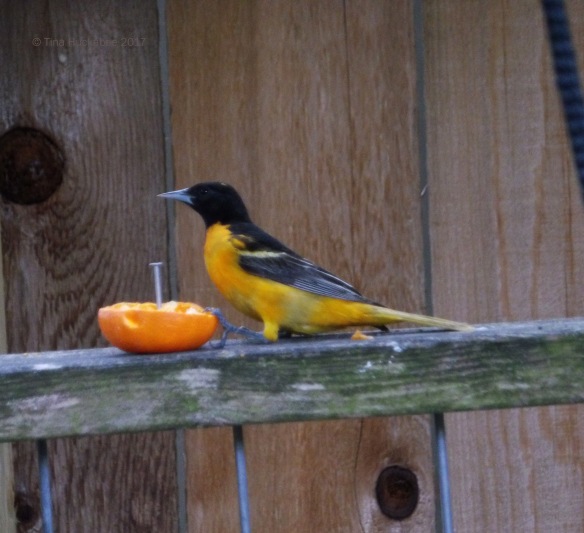
I hastily nailed, and then impaled, tangerine slices when I read that Baltimore Orioles were winging their way through Central Texas.
I think that before next autumn’s migration, I’m going to rig some sticks for the birds’ perching pleasure. This guy looks uncomfortable squatting on top of the flat surface while he slurps the sweet stuff.
I can report that the tangerines were fabulous!
During several mornings I spotted one, or more, Swainson’s Thrush birds, Catharus ustulatus.
These pretty birds hung around the pond, bathing or fluffing from bathing, but each individual also traipsed through the garden, presumably picking up yummy bugs for post-bath snacks. They have a funny way of running, reminiscent of how some water birds walk.
Swainson’s Thrushes enjoy a wide migration pattern, utilizing the entire width of the U.S. for migration and then breeding throughout a broad swath of Canada.
Another bird that I’ve never seen before this spring, and who made several appearances, were Canada Warblers, Cardellina canadensis. These beautiful, tiny birds were tough to photograph. They flit constantly and would not pose!
Despite this study in blur, his beauty is obvious, with coordinated, yet contrasting gray and yellow coloring, adorned by a black necklace.
These birds are shy and constantly on the go. They’re named for our fabulous northern neighbor, but are the last to migrate from South America and the first to leave Canada for their tropical winter home. They like it hot, I guess.
I think this is a female Canada warbler.
This was the best photo I managed. Her markings don’t quite fit the color patterns of other species with the gray and yellow scheme, but she also doesn’t show the faded black necklace that female and juveniles demonstrate. That could be my limited abilities to capture and not her lack of identity markers.
A gorgeous gray bird is this Gray Catbird, Dumetella carolinensis, who displays a you caught me! goofy look on his face.
Ah, this shot is better–you can see just how handsome this relative of the mockingbird is.
I’ve enjoyed previous visits from these birds, though usually they spend time in the blackberry vine, enjoying juicy fruits. This year my crop was a bust, but the Catbird visited nonetheless.
Black-and-white Warblers, Mniotilta varia, made appearances throughout April and May, but these are the best photos shots they allowed me:
I think the Black-and-white Warbler is a most elegant bird in both color and form.
Opposite from the Canada Warbler, the Black-and-whites are some of the first of the migrants to leave their tropical wintering homes and travel northward for breeding.
A Wilson Warbler, Cardellina pusilla,
…and his mate,
…spent a couple of days with me. They liked the pond–and the bugs! Both male and female worked up, down, and around various perennial plants, grabbing insects and hiding from the camera.
A Least Flycatcher, Empidonax minimus, stopped briefly,
…and charmed.
A Great Crested Flycatcher, Myiarchus crinitus, also showed up–and departed before the camera clicked.
Last spring (2016) several male and female American Redstart Warblers, Setophaga ruticilla, favored my garden and introduced themselves to me. This spring, only ladies visited.
This species hops and dances, flashing decorative, butter-yellow patterned tails.
A single male Chestnut-sided Warbler, Setophaga pensylvanica, briefly brightened the garden.
This multicolored cutey was a fleeting guest–I hope his kind returns one day.
The last warblers who vacated my garden was a pair of Common Yellowthroat Warblers, Geothlypis trichas. Cornell Lab of Ornithology (see previous link) describes their insect-hunting vocalizations as “witchety-witchety-witchety” and that’s exactly how I found them as the female worked the garden for some protein, witchety-whichetying all the while.
Here, she contemplates a dip in the pond.
The male, jaunty mask in place, enjoyed the pond, but I’m sure snatched his share of insects, too.
It’s been just over a week since I last spied these two; I hope they’re flying north to do their duty and raise a family. Moreover, I hope that they–with their offspring– pop back for a visit in September or October.
No male Painted Bunting, Passerina ciris, ever landed with his signature splash of color, but several females enjoyed my pond.
They’re always welcome in my garden–as are most wild critters. Come back soon, feathered friends!
Migrating or otherwise, did wildlife visit your garden this past month? Please post for June Wildlife Wednesday. Share photos and stories of your garden wildlife to promote and appreciate your region’s natural habitat and diversity. When you comment on my post, please remember to leave a link to your Wildlife Wednesday post so readers can enjoy a variety of garden wildlife observations.
Happy wildlife gardening!
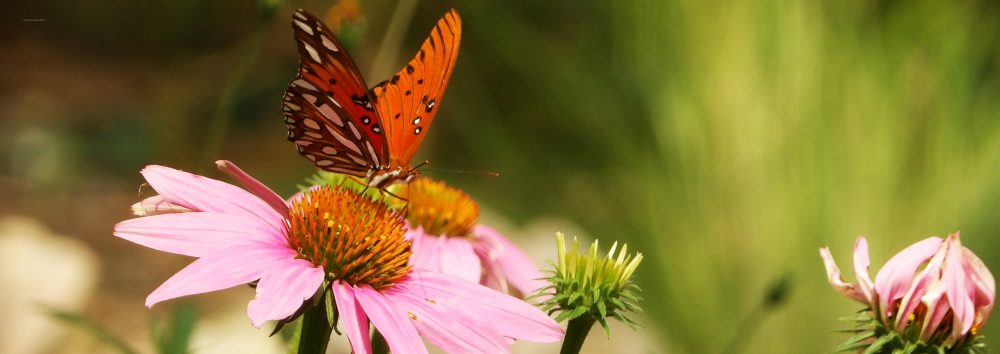
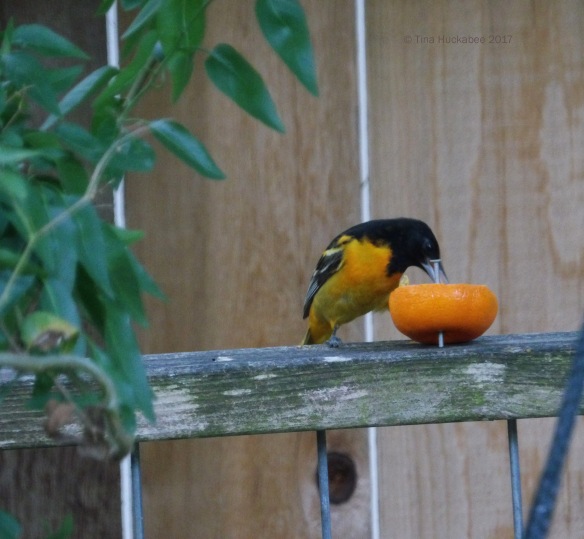

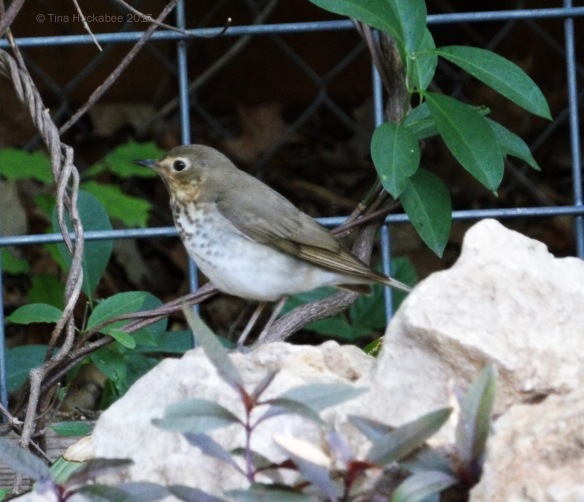


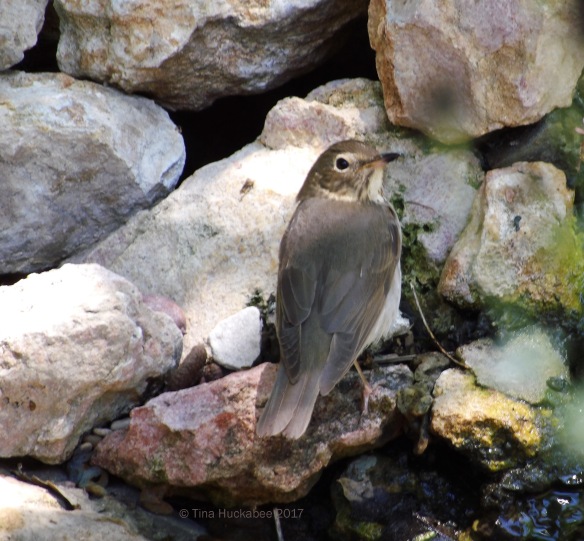

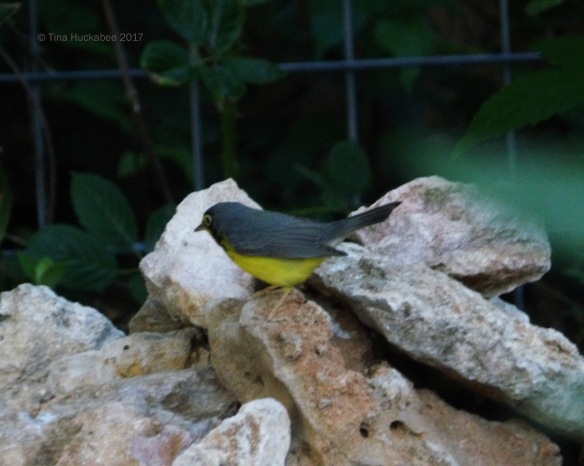

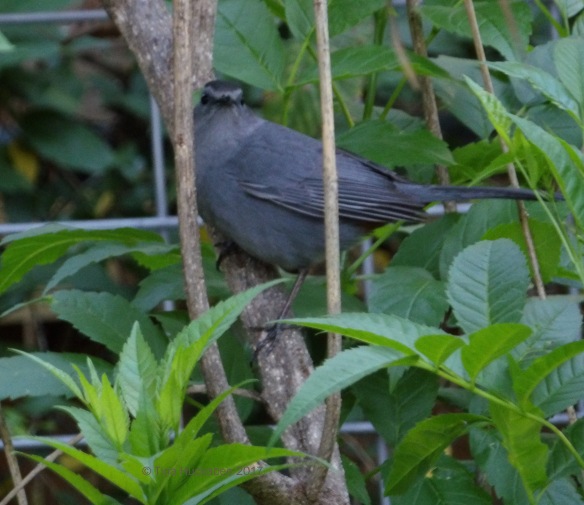


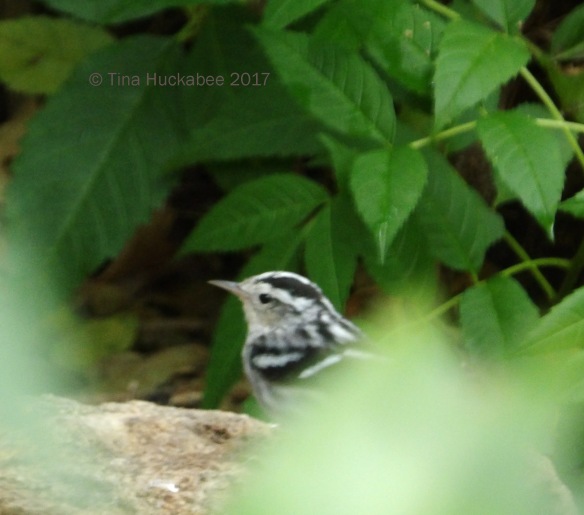
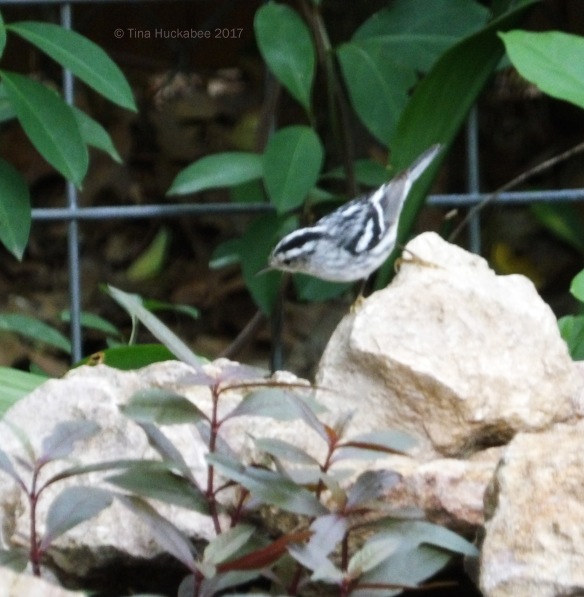




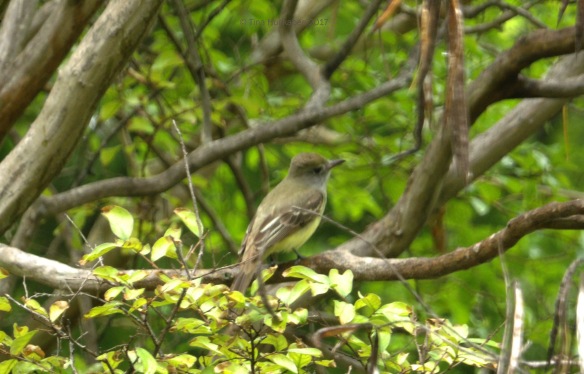
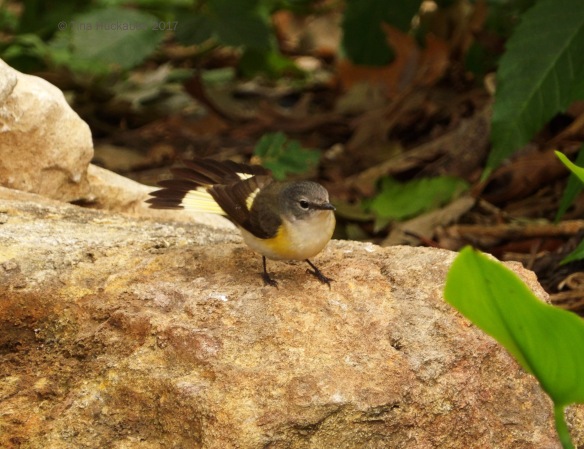


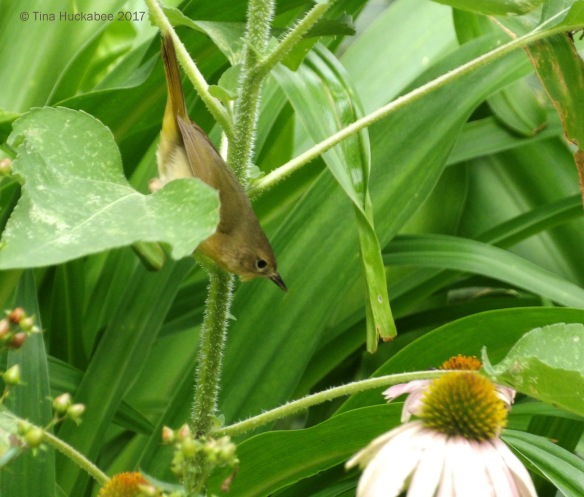
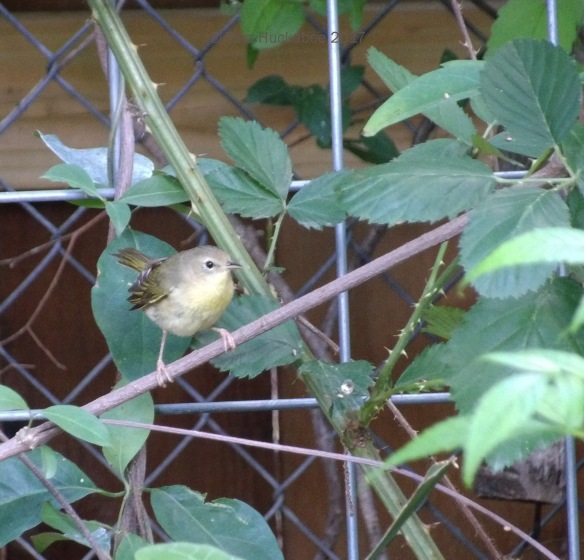
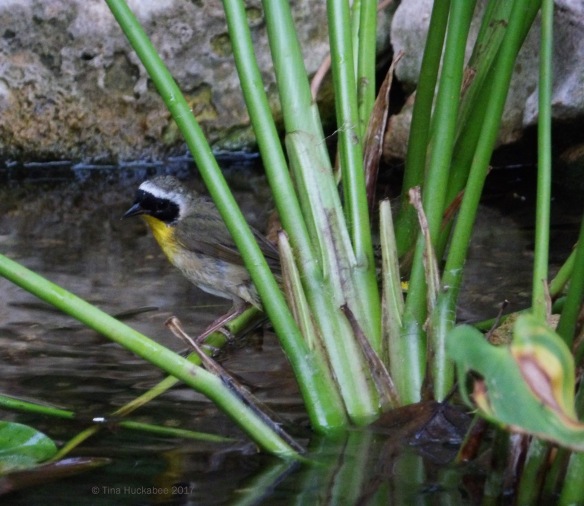
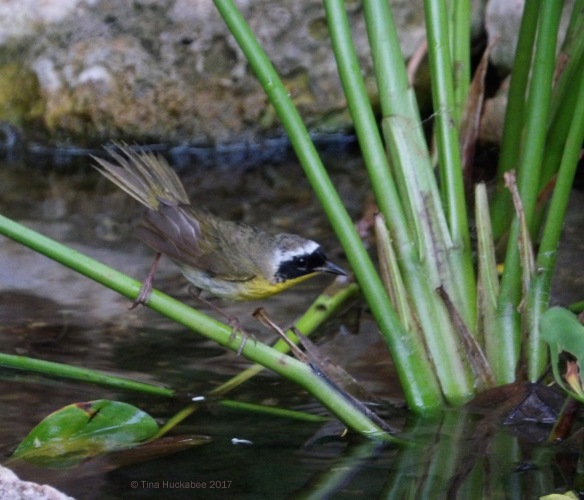

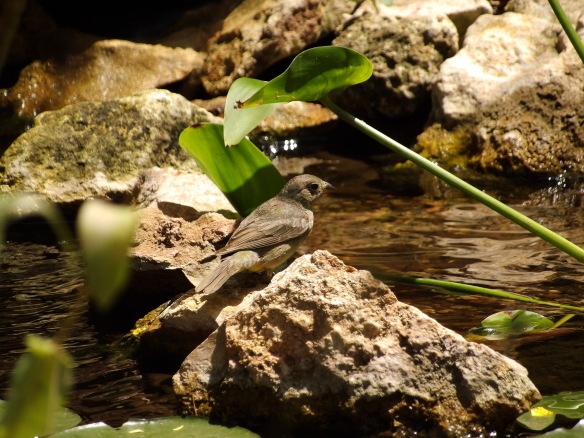
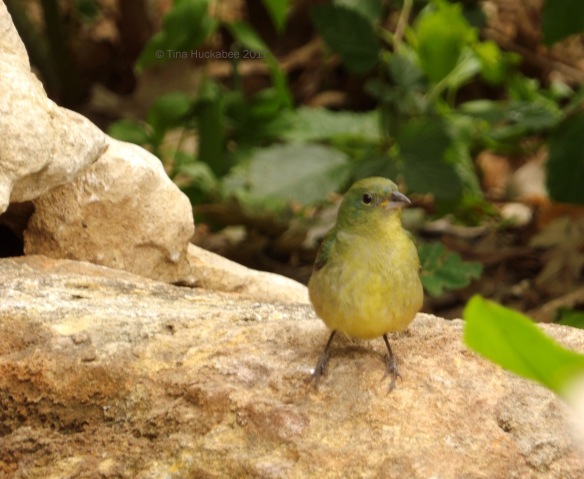
Amazing post! Your bird pics just get better and better. I think the word must be out, birdwise, on how great a stop your gardens are. Perhaps you mentioned it and I missed it – but where is it that you are keeping tabs on which birds are heading your way and when? I can’t help but think I’d see/notice more of the various short term visitors if I knew who I was looking for…
LikeLike
Well, thanks Deb! Truthfully, I’m not all that happy with the photos, taken through windows (mostly) and at a distance. Notwithstanding the beauty and clarity of Pella windows, I remain at a distance from the birds so that I can watch and click–and accept what I get through the lens. I’ve joined the Birds of Texas on Facebook (stop making that face!). That group 1) takes the most amazing shots, and 2) there are some really knowledgeable folks on the site. I’ve learned to recognize birds because of the photos I’ve seen on the site. I saw both Blackburnian and Magnolia warblers in my garden–no photos–but I’d seen pics of them on the site, so I recognized them. It’s been a great learning tool for me. Also, I’ve really tuned in to the back windows that look out onto the garden and pond; for the last few months, it was a rare time when I walked by one of the three big windows and didn’t see something fluttering near the pond. I keep the binoculars and camera on the window sill or at the kitchen table. Yeah, I’m one of “them” now. 🙂
LikeLike
I agree with you that one can learn tons from various Facebook groups. I joined one called “Ferns, lichens and mosses”, and it is one of my favorite places to learn. So many knowledgeable people on there, it baffles me! As always, I really enjoy your bird shots. Although you may have a more critical assessment of your skill, know that the rest of us admire your abilities. 🙂
LikeLiked by 1 person
Awe, sweet! Some of those FB groups are valuable, some, not so much. 🙂
LikeLike
What a wonderful variety of migrants passing through your garden and you were able to photograph so many. I seem to have fewer passing by or I am just not seeing them.
LikeLike
I think they’re really attracted to the pond, plus, I have lots growing that the passers-through like. I do think that they’ve probably always come through, but that I’m more aware of them (see the last part of my rely to Deb). My husband has become inured to my ceasing conversation at dinner, hopping up from the table, grabbing the binoculars and having a look. Fortunately, he also enjoys the challenge of identifying a new bird, so for now, the marriage is intact. 🙂
LikeLiked by 1 person
Pingback: Wildlife roundup – If only I could fly too | Frogend dweller's Blog
What a fantastic variety of migrants. Have you added up how many species pass your way? Hust this one post must contain about as many different kinds as we ever see here. Ho Hum,I am so glad you share though! I love the tangerine nails, such a good idea.OK, so this month my favourite was the American Redstart warbler. She looks wonderful shaking her tail-feather. A beautiful flamenco dancer.
My post is mostly about dragonflies this time: http://wp.me/pM8Y1-5uH
LikeLike
Haha–funny you should ask, but no, I’ve avoided making lists as “real” birders are big on lists and I’m trying (desperately) to avoid being a “real” birder. 🙂 As for the numbers and varieties, Texas is a (maybe THE) flyway for bird migration between the Americas. Birders coming from many places to bird watch is a huge tourist draw The coastal areas get even more birds because many of those tiny travelers fly across the Gulf of Mexico and rest at sanctuaries before they move north, but we here in Central Texas enjoy a fair show. I’d agree with you on those Redstarts–they’re just so beautifully marked and when they flash their feathers–they do look like dancers.
I loved your dragonfly post–I need to get with the program and learn that photography!
LikeLike
Tina’s garden has become a hotel with free buffet and swimming pool for the birds that emigrate! Everyone says “let’s make a stop in the garden of Tina that takes care of us very well”. How many birds have passed through your garden, all beautiful and the photos are wonderful. The Baltimore Orioles with their yellow breast and tangerine eating are lovely. All Warblers are very pretty, but Wilson’s that is yellow with the black spot on the head is cute. Tina to continue her garden full of wild birds. Have a good week. Greetings from Margarita.
LikeLike
Thanks, Margarita. The bird migration was a wonderful event this spring–I’m sorry it’s over, but so grateful that I could observe them. Glad you enjoyed the post!
LikeLike
Impressive collection of bird visitors to your garden, especially the warblers. They are all so pretty.
Here are my visitors, along with their favorite plants
http://rockoakdeer.blogspot.com/2017/06/wildlife-wednesday-june-2017.html
LikeLike
The migrating birds put on a show, no doubt about it!
LikeLike
A lovely post. What an amazing variety of birds you have and such beautiful photos.
LikeLike
Thanks! I’m thrilled that there were so many birds through the garden this spring; I’m already looking forward to the autumn migration.
LikeLike
Pingback: Wildlife Visitors in May 2017 – My Wild Australia
What pretty birds those warblers are, especially the canada warbler and chestnut sided warbler, and the baltimore oriole is quite a sight too. So lovely to see so many birds stopping in your backyard for a break from their long journey. It must be exciting waiting in anticipation to see which migrants visit each year and a wonderful surprise when a new visitor appears.
LikeLike
Thanks, Sue and yes to all of that. It’s been a great show and I hope to have an even greater variety in the fall.
LikeLiked by 1 person
I’m just astonished by the variety of birds you have coming by — and that you can identify them. Obviously, you’ve created a destination resort for them! Even some of the sanctuaries down here set up little pools and such to attract the birds for the sake of the photographers who are just over there —–>
(behind the blinds!)
I hear so often that Facebook is *the* place to go for identifying birds, plants, insects, etc. But I just can’t bring myself to re-join. I left several years ago, because of privacy concerns, and nothing I’ve read about the company or its grand poo-bah has made me any more eager to jump on that bandwagon. But, with sites like iNaturalist and BugGuide — not to mention all the professional-level galleries that are around — I’m doing all right so far. And blogs like yours are fabulous: lots of information, and no snark.
Speaking of learning, I learned some important lessons about bumblebees yesterday. It seems they will nest in the ground, underneath great piles of mowed grass and debris. Who knew?
It also seems that they don’t like having their nests disturbed by people wandering through their subdivision. Yep — I got stung. One bumble, six stings — and in such a flash I hardly could believe it. How that bee knew to get up above my knee-high boots so it could go right through the cloth of my pants, I don’t know, but it did, and got the inside of both thighs in the bargain. The good news is I’ve always carried benadryl in my camera case, and I suspect that mitigated the effects somewhat. But it was quite an experience. It will be interesting to see how long it takes for it to wear off.
Are there tips for spotting bumblebee nests? They’re such placid creatures generally, I really was surprised.
LikeLike
Oh dear, so sorry you were dinged by the bumble–I’ll bet she packed wallop of a sting. They are gentle, but when you’re talking about protecting the babies…all bets are off. Yes, they do nest in the ground, though I’ve only seen pics of their homes. I know there are some…things nesting in parts of my property that I’ve left bare, but I don’t stick around long enough to know what they be. Or bee. 🙂 The big reason that bumbles are headed toward being threatened (I think some are already on that ignominious list) is that we humans pave and turf over every square inch it seems, and they (and others) need some messy space to live and reproduce–and they’re not the only ones. So, leave some space unkempt, y’all–it’s good for critters and less work your you!
FB is awful, but I have learned quite a lot from the bird group and from a native plant group that I joined. Several community groups that I’m affiliated with do most of their communication through FB, so there it is. But I totally understand why you don’t want to be involved and I’m careful about phishing emails, etc., that I suspect are FB generated. Plus, I think I only have about 30 friends, so that cuts down on the garbage. I’m just not interested in what other folk had for lunch or what incredible feats their children accomplish. 🙂 Too many other more interesting things to read or do!
LikeLike
What a great idea with the piece of tangerine Tina. Here it would be impossible to use it, just because of the squirrels. Probably they won’t eat it but at least will try.
Wildlife Wed. was totally out of my mind last week, sorry.
LikeLike
Thanks, but I’d read that the Orioles, as well as some other bird species really like oranges and tangerines. And I can now vouch that they work! I have had plenty of birds snitch my blackberries, so I guess we all have a sweet tooth. Sweet beak. 🙂 No worries about missing, but I always enjoy your posts!
LikeLike
Great captures! We get the Orioles, Thrushes, and rare Warblers (I find those hard to spot). Oh, and the Catbirds. The migrants do seem to like your garden.
LikeLike
Thanks, Jason. It seems that my garden is on the bird b-n-b radar list–and I’m glad for it. I would imagine that you see many of the birds that pass through my garden as they breed in your neck of the woods during summer. I agree–the warblers are tough to see, tougher to identify!
LikeLiked by 1 person
How great to have all those visitors! I’m glad you caught and shared photos. Also, it’s very cool that you can provide orioles with sustenance for their travels. I will always be amazed by the birds that migrate many miles every year. They don’t look capable of it — so small and lightweight.
LikeLike
Yes, Hollis, it was a treat! Birds are amazing–their tiny selves traveling thousands of miles, it is a wonder!
LikeLike